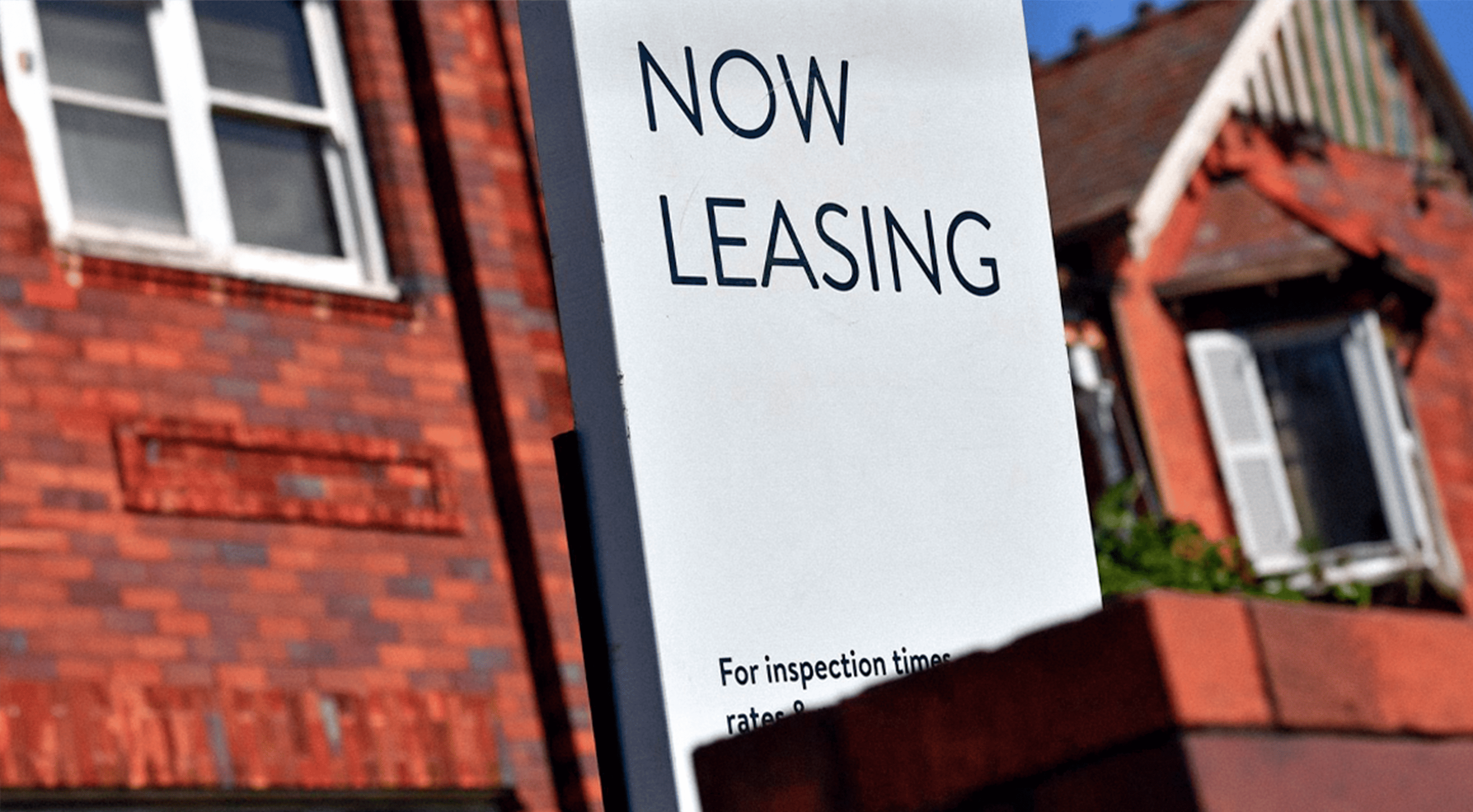Features > Property News & Insights > Market updates
More bad news for renters as vacancy rates fall again

Image from Sydney Morning Herald/Sam Mooy
KEY POINTS
- New data from REA Group’s PropTrack shows rental property vacancy rates have fallen again
- The development reverses a trend earlier this year, which saw conditions ease slightly, with more properties available for tenants to choose from
- Separate data compiled by rival property analytics firm SQM confirms vacancy rates are falling again
In more bad news for Australia’s embattled tenants, rental vacancies have started falling again.
PropTrack’s latest Market Insight Report says the number of vacant rental properties nationally dropped for the third consecutive month in September.
The slight easing in rental conditions seen over the first half of the year now appears to have come to an end.
The details
PropTrack’s Market Insight Report says the national rental vacancy rate dropped by 0.06% to reach 1.34% in September.
That’s less than half of what analysts consider a “healthy” vacancy rate.
If a vacancy rate is around 3%, it’s seen as representing a market that’s balanced between tenants and owners.
A vacancy rate of less than 2% usually implies high rental demand.
Conversely, a vacancy rate of 4% and above indicates rental prices may fall as landlords cut asking prices to secure tenants.
Lower vacancy rates also often equate to higher rental yields for investors.
“In unwelcome news for renters, market conditions deteriorated further in September, with vacancies down in both capital city and regional areas,” says PropTrack Senior Economist Anne Flaherty.
“The easing in rental conditions seen over the first half of the year appears to have come to an end, with the proportion of rental properties sitting vacant trending lower since July.”
In September, PropTrack says capital city market rental vacancy rates fell by 0.05% while the Combined Regionals measure was down a further 0.08% to 1.12%.
Sydney’s vacancy rate fell to 1.56%, following a 0.08% decline over the month, while Hobart saw the sharpest drop in vacancy of any market over the month, falling by 0.26% to reach 0.63% - the lowest vacancy of any market.
Canberra recorded the second largest drop of the capitals in September, down 0.15% to 1.74%, while Perth and Brisbane saw falls of 0.10% and 0.06%, respectively.
Melbourne (+0.01%), Adelaide (+0.02%) and Darwin (+0.29%) were the only markets where rental conditions didn’t deteriorate further in September, although improvements of that tiny magnitude could hardly be considered large enough to have made conditions any easier for people searching for rental accommodation.
In a tiny bit of good news for renters, PropTrack says the vacancy situation, although dire, is better than last year’s record lows - but only in the capital cities.
“Despite the decline seen in September, vacancies are still higher in most capital cities compared to a year ago, with the combined rate up 0.22% year-on-year,” Anne Flaherty says.
“In contrast, regional markets have persistently seen vacancies fall, with the combined regional vacancy rate sitting 0.09% lower than 12 months ago.”
Underlining how tight the rental housing situation outside Australia’s big cities is, Ms Flaherty says the gap “between capital city and regional vacancy rates has consistently widened over the past five months, with regional vacancy now sitting 0.31% below capital city levels.”
PropTrack’s Anne Flaherty says it’s also worth noting that there are 46% fewer rental properties sitting vacant in September than there were at the onset of Covid-19 in March 2020 - just four and a half years ago.
SQM data
PropTrack’s analysis that the rental crisis is getting worse is backed by separate data from SQM Research.
It reports residential dwelling vacancy rates fell across Australia to 1.2% in September 2024.
SQM says there were a total of 37,932 residential properties vacant in September, a decrease from 39,665 in August 2024.
Perth, Canberra, and Hobart plus regional Australia were the main drivers in the decline, while all other capital cities were steady or recorded slight rises.
SQM says Sydney’s rental vacancy rate remained stable at 1.6%, while Melbourne’s vacancy rate increased to 1.7%, a 0.1% rise from August.
Canberra recorded the highest rental vacancy rate among the states and territories at 2.0%, showing a slight decrease from August.
Perth saw its vacancy rate decrease to 0.6%, while Darwin’s vacancy rate increased to 1.0%.
Adelaide maintained one of the lowest vacancy rates at 0.6%, while Hobart declined to 0.8%.
SQM also measures vacancy rates in the central business districts of cities, where there is often a higher turnover of rental properties.
It says conditions in September were largely steady.
Sydney’s CBD recorded a 5.0% vacancy rate, while Melbourne recorded a slight decrease to 5.1%.
SQM says Brisbane’s CBD continued to experience strong demand with a low vacancy rate of 2.4%.
Effect on rents
However, SQM says the effect of low vacancy rates on asking rents in capital cities is “mixed”.
Over the month leading up to the 12th October 2024, SQM says Capital city advertised rents rose by 0.5%.
Sydney rents rose 0.9%, reflecting what SQM says was “a turnaround from a fall in rents over winter.”
However, Melbourne recorded a 1.1% decline, indicating a softening in rental demand.
Brisbane rents rose by 1.5%, “showcasing a healthy increase”, according to SQM, while “Perth also exhibited growth with a 1.7% rise, marking it as one of the stronger performers.”
SQM says Adelaide recorded a decrease of 0.2%, signalling a slight downturn in rental prices.
Stay Up to Date
with the Latest Australian Property News, Insights & Education.




.png?width=292&height=292&name=Copy%20Link%20(1).png)
 SIGN UP FOR FREE NEWSLETTER
SIGN UP FOR FREE NEWSLETTER





.jpg?width=1920&height=1080&name=Warning%2c%20You%20Might%20Be%20Facing%20Higher%20Taxes%20Soon%20(1).jpg)





.png?width=1920&height=1080&name=Rate%20Drops%20Signal%20BIGGEST%20Property%20Boom%20in%20DECADES%20(1).png)

.jpg?width=1920&height=1080&name=Labor%20vs%20Liberal%20These%20Housing%20Policies%20Could%20Change%20the%20Property%20Market%20Forever%20(1).jpg)
.jpg?width=1920&height=1080&name=QLD%20Slashes%20Stamp%20Duty%20Big%20News%20for%20Investors%20%26%20Home%20Buyers%20(1).jpg)
.jpg?width=1920&height=1080&name=Trump%20Just%20Slapped%20Tariffs%20%E2%80%93%20Here%E2%80%99s%20What%20It%20Means%20for%20Australia%20(1).jpg)
.jpg?width=1920&height=1080&name=Federal%20Budget%202025%20More%20Debt%2c%20No%20Housing%20%E2%80%93%20Here%E2%80%99s%20What%20You%20Need%20to%20Know%20(1).jpg)
.jpg?width=1920&height=1080&name=Australias%20Housing%20Crisis%20is%20about%20to%20get%20MUCH%20Worse%20(New%20Data%20Warns).jpg)
%20(1).jpg?width=1920&height=1080&name=Australias%20RENTAL%20CRISIS%20Hits%20ROCK%20BOTTOM!%20(2025%20Update)%20(1).jpg)
%20(1).png?width=1920&height=1080&name=Is%20Adelaide%20Still%20a%20Good%20Property%20Investment%20(2025%20UPDATE)%20(1).png)
.jpg?width=1920&height=1080&name=RBA%20Shocks%20with%20Rate%20Cuts!%20What%E2%80%99s%20Next%20for%20Property%20Investors%20(1).jpg)
%20(1).jpg?width=1920&height=1080&name=I%20Predict%20The%20Feb%20Rate%20Cut%20(My%20Price%20Growth%20Prediction)%20(1).jpg)
.png?width=1920&height=1080&name=Why%20Property%20Prices%20Will%20Rise%20in%202025%20Market%20Predictions%20(1).png)
.jpg?width=1920&height=1080&name=Why%20Investors%20Are%20Choosing%20Apartments%20Over%20Houses%202%20(1).jpg)
.jpg?width=1920&height=1080&name=Why%20Rate%20Cuts%20Will%20Trigger%20A%20Property%20Boom%20(1).jpg)
.jpg?width=1920&height=1080&name=Retire%20On%202Million%20With%20One%20Property%20(Using%20SMSF).jpg)
.jpg?width=1920&height=1080&name=4%20Reasons%20Why%20You%20Should%20Invest%20in%20Melbourne%20Now%20(1).jpg)
%20(1).jpg?width=1920&height=1080&name=Old%20Property%20vs%20New%20Property%20(Facts%20and%20Figures%20Revealed)%20(1).jpg)
%20(1).jpg?width=1920&height=1080&name=Will%20The%20New%20QLD%20Govt%20Create%20a%20Property%20Boom%20or%20Bust%20(My%20Prediction)%20(1).jpg)
%20Scott%20Kuru%20(1).jpg?width=1920&height=1080&name=Inflation%20Hits%20Three-Year%20Low%20(Will%20RBA%20Cut%20Rates%20Soon)%20Scott%20Kuru%20(1).jpg)
.jpg?width=1920&height=1080&name=How%20to%20Buy%20Investment%20Property%20Through%20SMSF_%20The%20Ultimate%20Guide%20(1).jpg)
.jpg?width=1920&height=1080&name=Victoria%20Slashes%20Stamp%20Duty%20Melbourne%20Set%20to%20Boom%20Scott%20Kuru%20(1).jpg)
.png?width=1571&height=861&name=Are%20Foreign%20Buyers%20Really%20Driving%20Up%20Australian%20Property%20Prices%20(1).png)
.jpg?width=1920&height=1080&name=The%20Single%20Factor%20That%20Predicts%20Property%20Growth%20Regions%20(1).jpg)
%20Scott%20Kuru%20(1).jpg?width=1920&height=1080&name=My%20Prediction%20On%20Rates%20%26%20Negative%20Gearing%20(Market%20Crash)%20Scott%20Kuru%20(1).jpg)

-1.png?width=1920&height=1080&name=Major%20Banks%20Cut%20Rates%20Will%20RBA%20Follow%20Suit%20(Sept%20Rate%20Update)-1.png)
%20Scott%20Kuru-1.png?width=1920&height=1080&name=Rate%20Cut%20Coming%20What%20New%20Zealands%20Move%20Means%20for%20Australia%20(Sept%20Prediction)%20Scott%20Kuru-1.png)
%20(1).jpg?width=1920&height=1080&name=Buy%20when%20the%20interest%20rates%20are%20high!%20(Why%20you%20must%20buy%20now!)%20(1).jpg)
.jpg?width=1920&height=1080&name=Carms_Revised%20Taxes%20Due%20Aug%209%20YT%20Thumbnail02%20(1).jpg)
.jpg?width=1920&height=1080&name=Carms_Too%20Little%20Too%20Late%20Aug%207%20YT%20Thumbnail01%20(1).jpg)









.jpg?width=1920&height=1080&name=Carms_Rate%20Drop%20In%20July%20Jun%2010%20YT%20Thumbnail02%20(1).jpg)
.jpg?width=1920&height=1080&name=Carms_Own%20a%20Property%20V6%20Jun%205_YT%20Thumbnail%20(1).jpg)









.png?width=1920&height=1080&name=Artboard%201%20(3).png)






.jpg?width=1920&height=1080&name=YT%20thumbnail%20%20(1).jpg)

